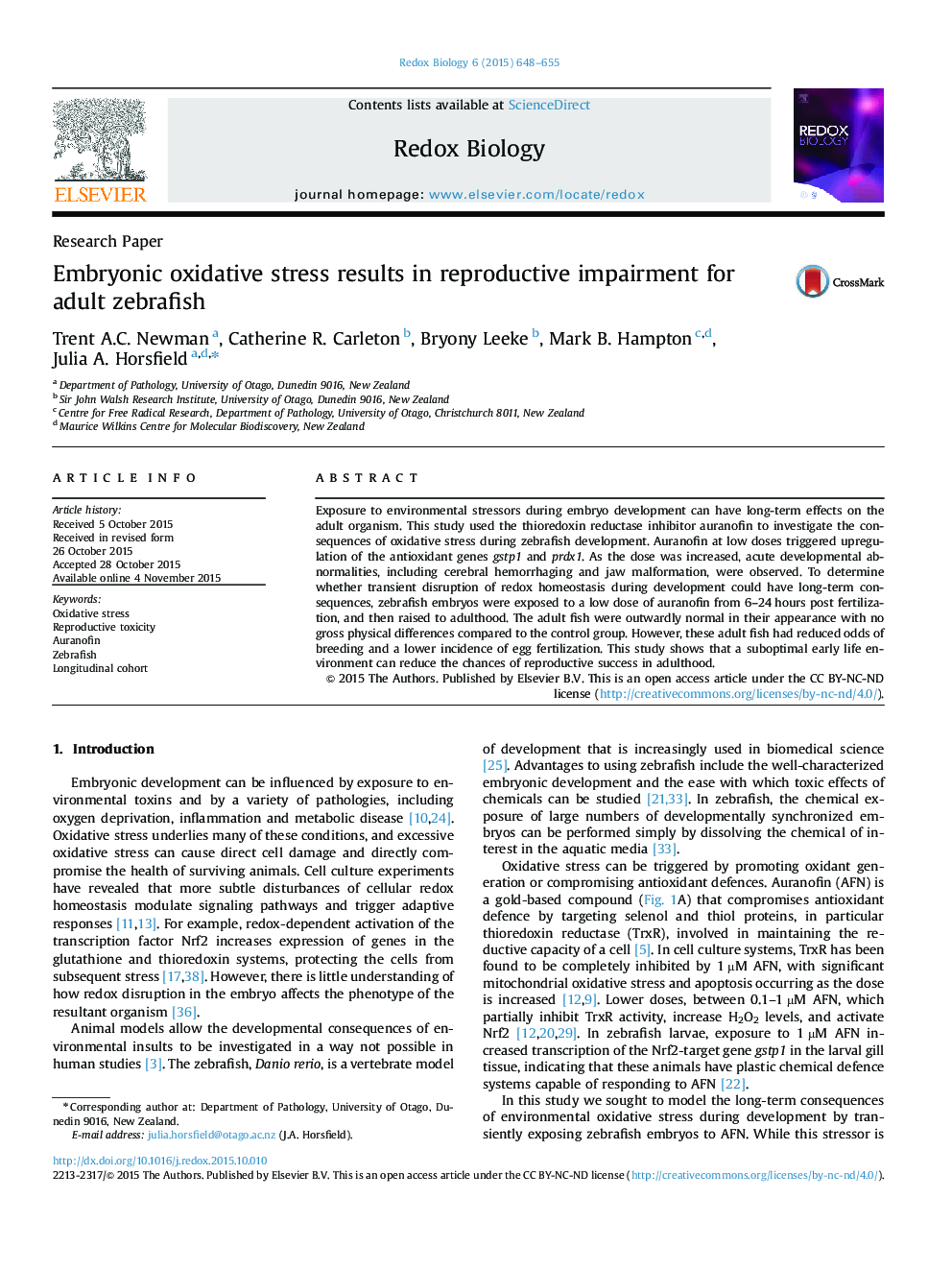| Article ID | Journal | Published Year | Pages | File Type |
|---|---|---|---|---|
| 1922955 | Redox Biology | 2015 | 8 Pages |
•We exposed zebrafish embryos to the oxidative stress-inducing compound auranofin.•Embryos showed a dose-dependent increase in developmental abnormalities.•Exposed embryos responded by upregulating oxidative stress-responsive genes.•Embryos transiently exposed to a low dose of auranofin were raised into adults.•The resulting adults had reduced fertility compared with controls.
Exposure to environmental stressors during embryo development can have long-term effects on the adult organism. This study used the thioredoxin reductase inhibitor auranofin to investigate the consequences of oxidative stress during zebrafish development. Auranofin at low doses triggered upregulation of the antioxidant genes gstp1 and prdx1. As the dose was increased, acute developmental abnormalities, including cerebral hemorrhaging and jaw malformation, were observed. To determine whether transient disruption of redox homeostasis during development could have long-term consequences, zebrafish embryos were exposed to a low dose of auranofin from 6–24 hours post fertilization, and then raised to adulthood. The adult fish were outwardly normal in their appearance with no gross physical differences compared to the control group. However, these adult fish had reduced odds of breeding and a lower incidence of egg fertilization. This study shows that a suboptimal early life environment can reduce the chances of reproductive success in adulthood.
Graphical abstractFigure optionsDownload full-size imageDownload as PowerPoint slide
